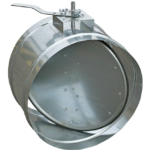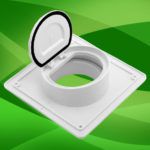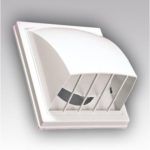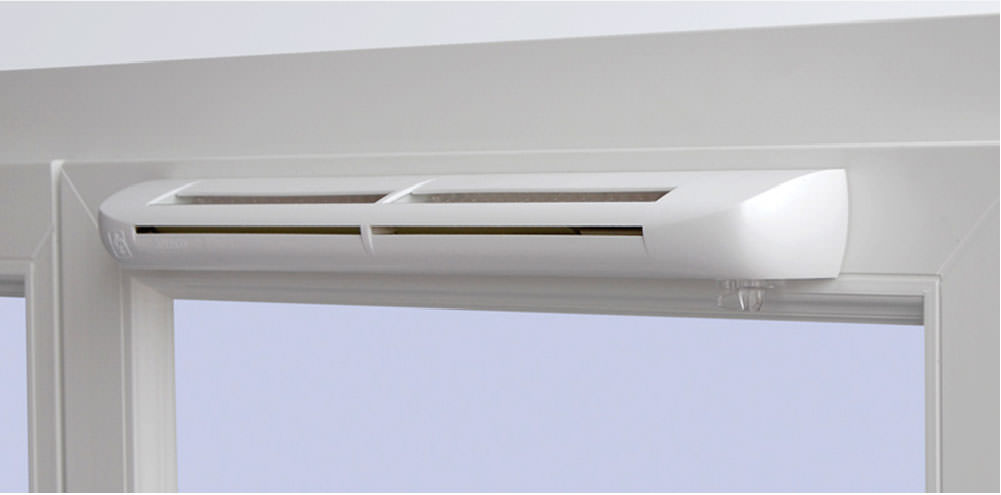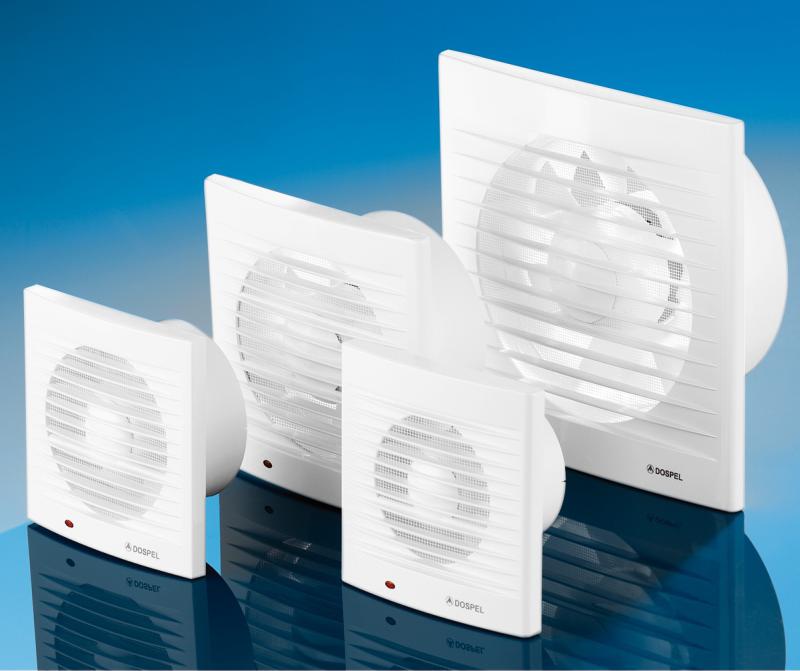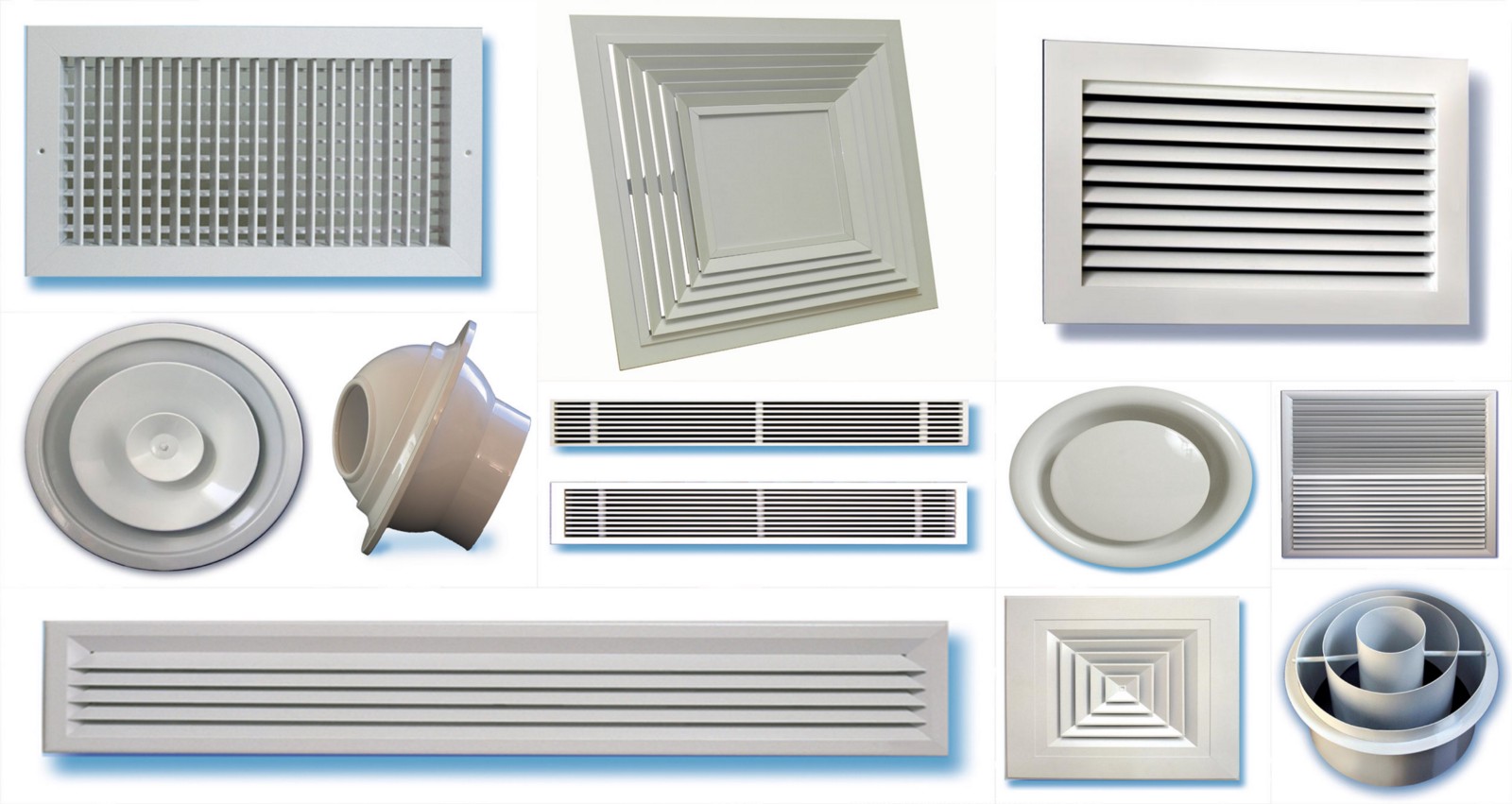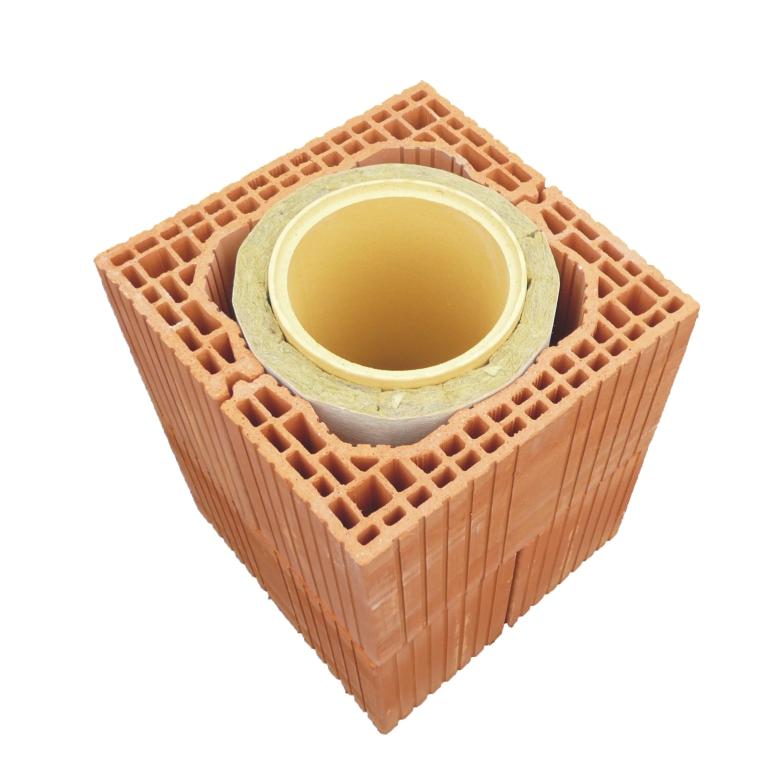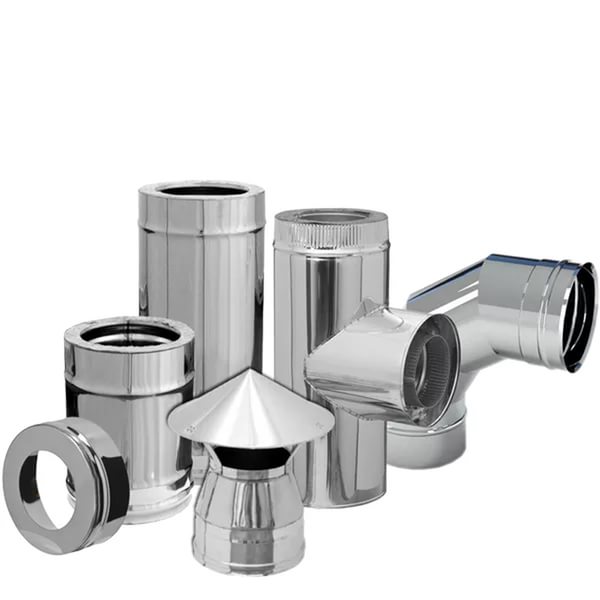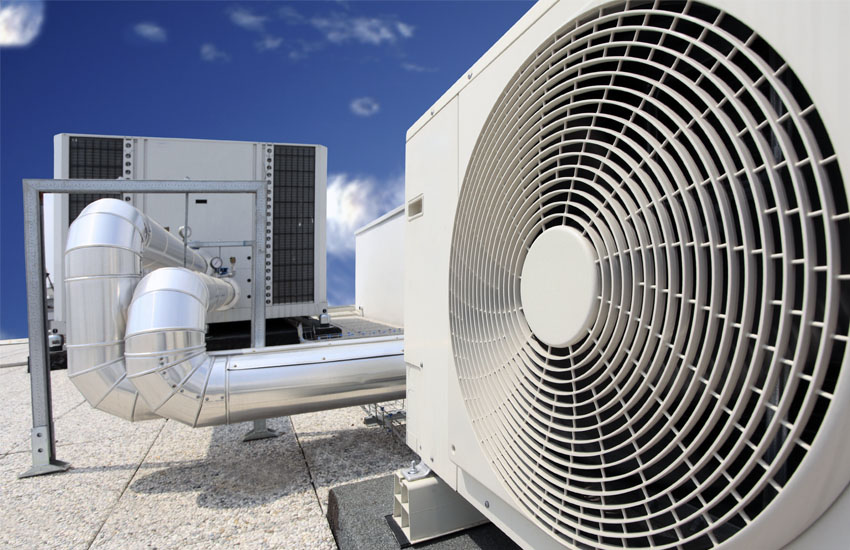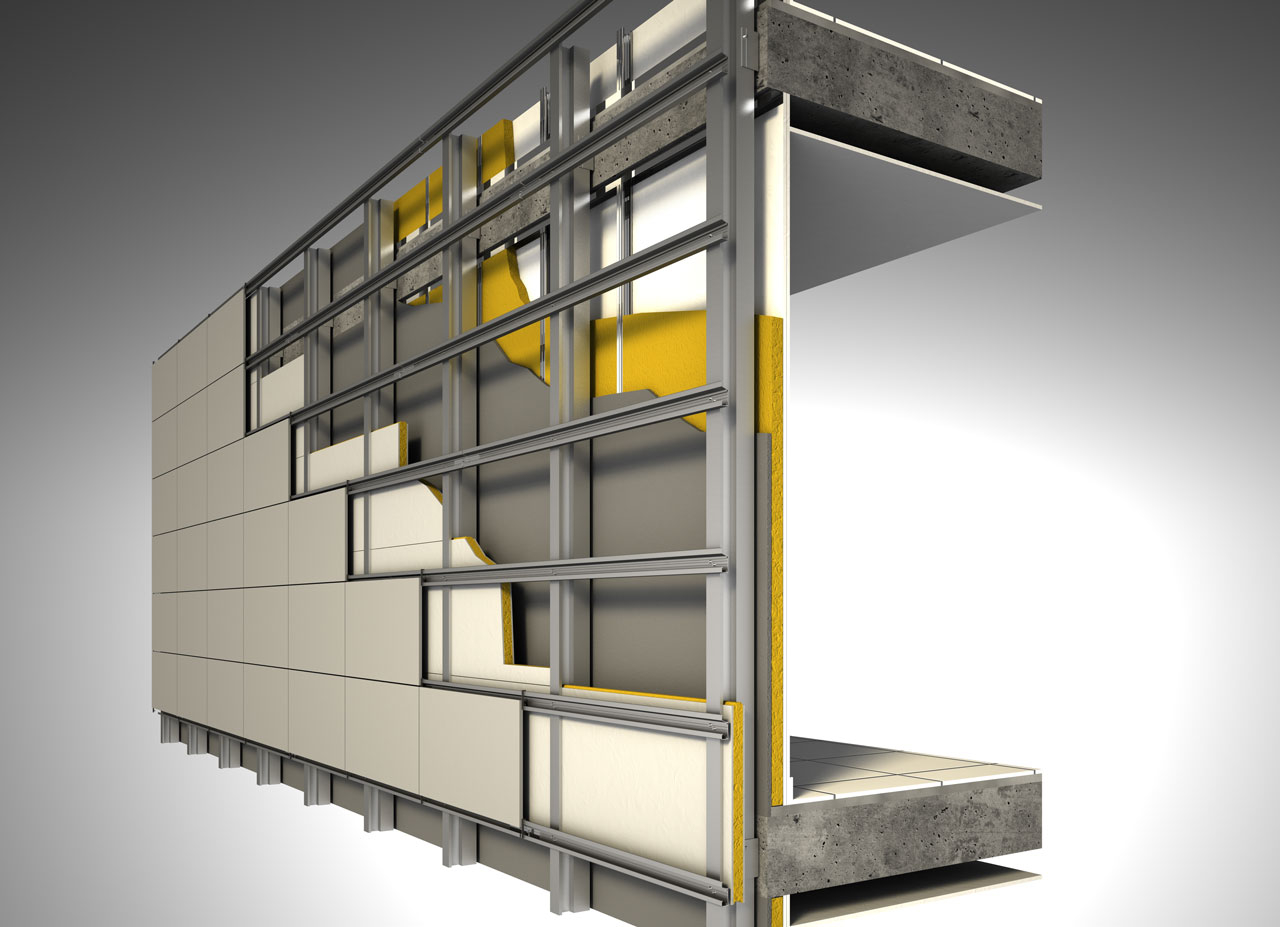Good ventilation helps prevent dampness, mold and odors in the room. If a weak draft is observed in the natural ventilation system, then it must be equipped with a duct fan.
The actual problem in apartment buildings is the spread of odors through the ventilation duct from neighboring apartments. In such cases, it is necessary to prevent air backflow when the fan is off. An effective solution to problems associated with weak draft and odors in the apartment is an exhaust fan with a non-return valve. This device is intended for use in the following locations:
- in the bathroom;
- in the kitchen;
- in sanitary compartments;
- in smoking rooms;
- in public laundries;
- in gyms, libraries, basements, etc.
Thanks to the check valve, dust, debris and air from the ventilation duct does not get into the house. This device helps especially well in cases where the apartments of the house are equipped with waste bins.
Valve types
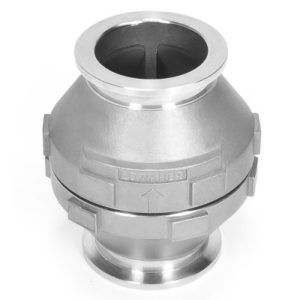
Concepts such as backdraft and non-return valve are closely related. If you install an extractor hood in the kitchen and turn off the equipment in winter, a strong reverse draft will occur: cold air from the street will flow into the room and cool it. And if a fan with a check valve is installed in the hood, then the situation will radically change for the better.
There are three types of check valves:
- Electrically or manually operated.
- Self-closing (on a spring).
- Passive (position change is carried out only under the influence of forward or reverse flows).
In addition, devices with a non-return valve are divided into the following types:
- household;
- ventilation diffusers;
- round or square duct fans.
Managed
Self-flap
Please note that fans equipped with a non-return valve are noisier than conventional fans.
Passive
Check valve design
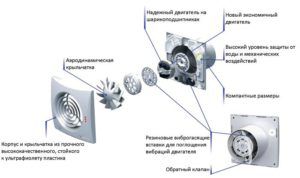
For the manufacture of household fans, plastic is mainly used. Industrial ones are made of metal and differ in greater cost, power and weight. A fan with a non-return valve is a structure that consists of:
- Housings.
- Impellers.
- Engine.
- Check valve.
The check valve is made of the following parts:
- Housing.
- Flaps rotating on an axis.
- Bounding semicircular protrusions.
- A return-acting torsion spring designed to throw the damper back into place when the fan stops operating. This element is present only on self-closing valves.
Check valve working principle
Devices with a non-return valve can only assume two positions - closed and open.
- In the closed position, the sash turns perpendicular to the branch pipe, closing the air inlet.
- When open, it assumes a position parallel to the branch pipe, without obstructing the movement of air.
Thanks to the projection-shaped stops, the sash can only rotate 90 degrees. After turning on the fan, the system is in the open position. When the device is turned off, the sash closes by rotating 90 degrees. The flow is strictly in one direction due to the fact that the axis is not located in the center of the pipe.
Spring models are the most common in everyday life. However, they are also used in manufacturing. So, the Shuft model RSK, intended for industrial use, has two spring leaves located on the diametrical axis. The flaps are made in the form of semicircles having one common straight side. When the fan is turned off, the system closes, when turned on, both folds are located in the middle, opening the air flow. This design is made of galvanized steel and has a fairly large weight.
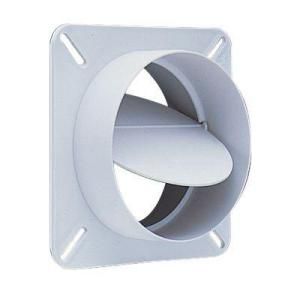
In channel-type petal dampers, a damper mounted in the air duct resembles a gate that prevents precipitation and cold from entering the dwelling. For installation in the kitchen, petal valves "Tulip" are often used, which have another name - inertial grilles.
These structures represent a rectangular frame with built-in horizontal grilles inside. Their opening is facilitated by the fan flow, and when the air supply is cut off, the flaps close under their own weight. Lobe valves that work on this principle are called gravity valves.
When installing a paddle gravity valve in a bathroom, toilet or kitchen, select a fan with sufficient power.
How to choose the right model?
When purchasing a fan, it is recommended to consider the following indicators:
- The volume of the room. First of all, you should determine the volume of the room. To do this, multiply the length of the room by its width and height. Further, the resulting indicator is multiplied by a value that determines the rate of air exchange in the room. This value is equal to the number of times the air is exchanged in the room for a certain period of time. So, in the bathroom and shower, the air should be changed approximately 3-8 times in one minute. Thus, when choosing a bathroom fan with a check valve, you need to know that its power should be at least 65 W if the volume of the bathroom is 21 m³. This power is sufficient for the minimum number of air exchange times - 3 times. To achieve the maximum value of 8 times, the fan power for a room with a volume of 21 m³ must be at least 175 W.
- Safety. Steam generated in the kitchen during cooking and in the bathroom while showering can cause electric shock. Therefore, it is advisable to purchase low-voltage models designed for a voltage of no more than 12-24 watts.
- Noise level. Any fan model makes noise during operation.Therefore, in order to prevent the occurrence of uncomfortable sensations, one should pay attention to structures with a reduced noise level.
- Availability of additional options. Today on the market you can find models of fans equipped with a timer, motion and humidity sensors, a constant ventilation mode operating at a minimum speed, and even a clock on the front panel. In addition, for the bathroom and kitchen, you can choose a device with protection against splashes of water and grease. However, it should be borne in mind that such models are more expensive than conventional fans.
A ventilation device with a non-return valve is an indispensable thing for people suffering from allergies or asthma, since such structures not only prevent tobacco smoke and odors from neighbors from entering the apartment, but also clean the room itself from existing odors.

